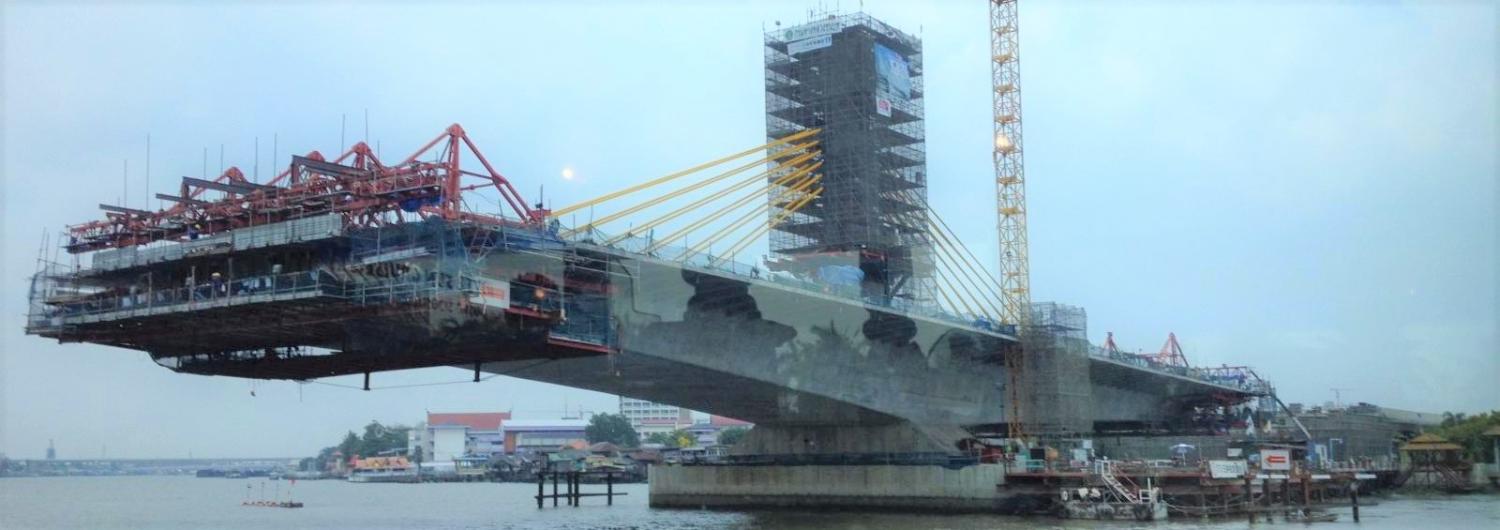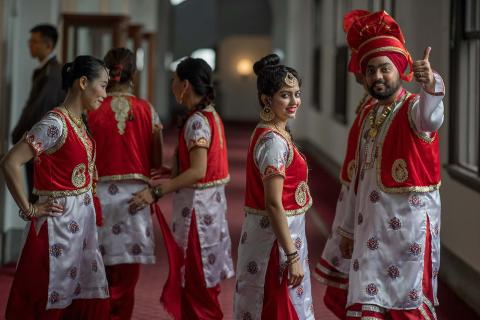Go east young khun
As the Association of Southeast Asian Nations (ASEAN) celebrates its 50th anniversary this year, the big question hanging over the party is to what extent this diverse group of 10 countries is going to put collective interest before individual ambition.
The divisions over how to deal with China’s territorial claims in the South China Sea have already raised big and widely reported questions in the security domain about the group’s value as a regional forum.
But Thailand’s re-launch of a new industrial development strategy last week before hundreds of invited foreign guests underlines how competition is also alive and well in the commercial domain, despite the all the messaging about the ASEAN Economic Community (AEC).
Some ASEAN experts argue that the group has a long record of being able to move forward on regional unity in some areas while being divided on others. But, unlike the past, there is no clear regional leader these days and some very uncertain domestic political environments make unity hard to find.
In Thailand’s case, the military-led government has a steep economic recovery task before a promised election in the next year after several years of weak growth, foreign investment and currency due to domestic political tensions underlined by the 2014 military coup.
Deputy prime minister and chief economic policy maker Somkid Jatusripitak frankly admits the country has lost 10 years of growth due to these political divisions. He has now set some particularly ambitious export and economic growth targets to smooth the way to an election under a new king.
Thailand’s reputation as the Detroit of the East in the car industry is a testament to its ability to attract foreign capital with transparent investment incentives managed by a Board of Investment which has long reported directly to the prime minister, unlike some of its peers.
But Somkid is quite blunt about how Brexit and Donald Trump’s election have 'shaken the world order', forcing governments and businesses in other countries to make strategic shifts in response.
So his government’s trendily badged Thailand 4.0 strategy for attracting new high tech industries such as aircraft maintenance and robotics has added a new, more interventionist lever. The government is touting matching government R&D funding for foreign companies which bring in the desired priority technologies in a significant new development within the AEC.
And here are other interesting twists in the new strategy:
Corridor talk: Thailand has always touted itself as the geographic heart of ASEAN and in the past this has led to a big focus on development on its periphery. Projects such as the planned massive Dawei port in Myanmar on the Andaman Sea coast and the so-called East-West Economic Corridor road link from Danang in Vietnam to a another Myanmar Andaman coast city, Mawlamyine, were heavily promoted.
Under the 4.0 strategy, the old eastern seaboard where foreign factories have located for three decades will become the main development focus as the renamed Eastern Economic Corridor (EEC). Thai officials say this is both more practical, because investors are already familiar with the area, and less expensive because some infrastructure already exists. For example, the U-Tapao airfield built by the US during the Vietnam War to accommodate B-52 bombers will become a satellite to Bangkok’s Suvarnabhumi Airport via a new fast train.
While there are still many transport links in play in the Mekong region, the previous focus on east-west links seems to be subtly shifting to more north-south corridors under the relentless pressure of China’s One Belt One Road Initiative (OBOR).
China gamechanger? China might be the biggest player on the infrastructure block but it seems Thai officials are still struggling with how to engage. In a telling insight into the process, one senior Thai official complains that Chinese and Thai officials operate differently. China is relaxed about starting projects and then doing the financial planning but Thais have to do a proper audit first. The official says building a fast train between two Thai airports makes sense because people already make that journey. But building a fast train line between Bangkok and Beijing doesn’t have any compelling rationale to most people. The compromise that seems to be emerging in the EEC is that Thailand will build the infrastructure but China will provide the technology.
Two AECs: There’s always been a divide between mainland and archipelagic South East Asia (indeed Australia’s foreign ministry has separate branches) but the Thais are quite blunt about what they see happening.
One prime ministerial adviser says there is an economy with 230 million people (stretching from Myanmar to Vietnam) on one piece of land and the new EEC sits right in the middle of that. Then there is an economy of 250 million people centered on Indonesia. 'You (investors) have to go there but it’s an island and logistics costs are very, very high,' he says emphasising that the EEC is much better connected.
It might be the 50th anniversary of ASEAN but the phrase CLMV (for Cambodia, Laos, Myanmar and Vietnam) seems to be much more prominent in Thai thinking than the AEC.
Skilling up: New infrastructure and investment incentives are only part of the story for Thailand which faces questions over whether its education system can staff the development plans. Indeed, Siam Cement Group director Kan Trakulhoon says there is too much focus on buying foreign licences to fuel industrialisation than doing research and development. For example, Thailand only spends about 0.5% of GDP on R&D compared with about 1% for Malaysia. 'There’s lots of optimism in Thailand but the main problem is human talent,' he says.
Thailand ranks lower than its poorer neighbour Vietnam in the PISA international student tests and the issue gets a lot of attention from those who understand the link to industrial upgrading. 'The PISA score is something that Thai society talks about a lot,' says Thailand Science Park director Janekrishna Kanatharana.
And there are promising pockets of success like the Thai-German Institute which, despite its name, has been operating as a user-pays trade reskilling institution in the new EEC zone for 20 years after initial German aid funding.
Can RCEP deliver?
Donald Trump might still be dominating the world trade policy debate, especially after the World Bank’s new study which suggests that the sort of threats emerging from the US Administration may undermine any chance of recovery in anaemic world trade growth.
But it is shifting opinion in Asia that will be just as important to how Australia moves in response to the Trump changes at the Regional Comprehensive Economic Partnership (RCEP) talks in Japan that begin Monday and the post Trans-Pacific Partnership (TPP) talks in Chile next month. Trade minister Steve Ciobo this week backed off his quixotic idea that China would join the TPP which seems to make the RCEP the main game.
But Institute of Southeast Asian Studies fellow Sanchita Basu Das says some South East Asian countries may still seek bilateral deals with the US to prevent China dominating the RCEP process which the ASEAN countries think they run.
Pradumna Rana and Ji Xianbai, of Nanyang Technological University’s S. Rajaratnam School of International Studies, provide Australia with some support in keeping the TPP alive without the US by arguing the group provides important new trade architecture for the region. But they say it would be unwise to try to add more countries like China or Indonesia to the remaining 11 members.
Shiro Armstrong and Amy King at the East Asia Forum reject the common view that China dominates the RCEP and that it is inevitably destined to be a low quality agreement. And former Indonesian trade minister Mari Pangestu and former IMF official David Nellor make some similar points in the Nikkei Asian Review.
CEOs back Trumpnomics
Trade negotiators might be Asia-bound but Australian chief executives seem to be switching their attention from China to the US despite the uncertainty surrounding the Trump Administration.
For the first time since PwC’s Global CEO survey asked the question seven years ago, the local CEOs see the US and China as equally strong growth markets. China has fallen from 63% in 2016 to 57% in this year’s survey while the United Kingdom (19%) and Japan (17%) rose slightly in third and fourth place.
Greg Earl travelled to Thailand with support from the Board of Investment.

